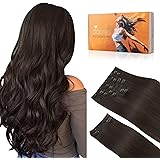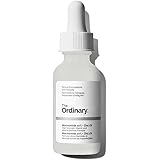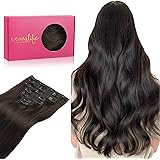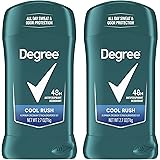While the quest for lustrous, healthy hair often feels like a puzzle with countless pieces, the reality is that a few targeted adjustments can make a significant difference. In fact, many people overlook simple yet transformative techniques that can elevate their hair care routine. The quick video above highlights three essential haircare tips that, if known earlier, could prevent common hair woes and foster truly healthy hair.
Here, we expand upon these vital insights, delving deeper into the ‘why’ and ‘how’ behind pre-poo oiling, the strategic use of clarifying shampoos, and the conditioning method that promises softer, silkier strands. Understanding these principles can be instrumental in achieving the vibrant, manageable hair you desire, effectively optimizing your entire hair care routine.
The Power of Pre-Poo Oiling: A Shield for Your Strands
One of the most impactful haircare tips highlighted is the practice of pre-oiling before washing. This method involves coating your hair, especially the mid-lengths and ends, with a nourishing oil before you step into the shower. The oil acts as a proactive shield, creating a vital moisture barrier that safeguards your hair from the potentially stripping effects of hot water and harsh shampoos.
Imagine if your hair could have a personal bodyguard before facing a potentially damaging situation; pre-poo oiling serves that exact purpose. When hair gets wet, its cuticles swell, making the internal structure more vulnerable. The oil helps to slow down this water absorption, preventing excessive swelling and minimizing protein loss. Furthermore, it prevents the shampoo from completely stripping away natural oils, which are crucial for maintaining hair health and moisture.
Selecting the Right Oils for Pre-Poo Treatment
Choosing the correct oil is paramount for an effective pre-poo treatment. Coconut oil, for instance, is known for its ability to penetrate the hair shaft due to its small molecular structure, providing deep nourishment. Other beneficial oils include argan oil, rich in vitamin E and fatty acids, which adds shine and softness; jojoba oil, which closely mimics the scalp’s natural sebum; and olive oil, a readily available option that offers excellent conditioning.
To implement this technique, a small amount of oil is typically warmed slightly to improve its spreadability. This warm oil is then gently massaged into the scalp and worked through the hair, focusing particularly on the more fragile ends. It is often recommended that the oil be left on for at least 30 minutes, though an overnight application can yield even more profound benefits. This extra step in your haircare routine truly sets the foundation for healthier, more resilient hair.
Navigating Clarifying Shampoos: Less is More for Optimal Hair Health
Another crucial insight offered pertains to the cautious use of clarifying shampoos. While these products are indispensable for removing stubborn product buildup, they are not designed for daily or even weekly use. These shampoos are formulated with stronger surfactants, which are cleansing agents that can be quite effective at dissolving and washing away residues but, conversely, can also be drying if overused.
Picture your hair feeling weighed down, unable to truly shine, or even resisting styling products. This is often a sign of product buildup from silicones, waxes, hard water minerals, and environmental pollutants accumulating on the hair shaft. Clarifying shampoos are expertly formulated to tackle this issue, restoring your hair’s natural bounce and shine. However, their potent cleansing action means they can strip away not only unwanted buildup but also essential moisture, leaving hair feeling dry and brittle if applied too frequently.
When and How Often to Clarify Your Hair
The advice to use clarifying shampoos only “a couple times a month” is a solid guideline for most individuals. However, the exact frequency can be adjusted based on your specific hair type and styling habits. For instance, those who use a lot of styling products, have oily scalps, or live in areas with hard water might find themselves needing to clarify slightly more often. Conversely, individuals with dry, fine, or color-treated hair may only require clarifying once a month or even less.
After a clarifying wash, it is often beneficial to follow up with a deep conditioning treatment. This helps to replenish any moisture that may have been lost during the intense cleansing process, ensuring your hair remains hydrated and soft. By being strategic with your clarifying shampoo usage, you can maintain a clean, refreshed scalp and hair without compromising its overall health and vitality, contributing significantly to your overall healthy hair journey.
Mastering the Squish to Condish Method for Ultimate Softness
Finally, the video introduces “squish to condish” as the superior method for conditioner application. This technique is particularly beloved by those with wavy or curly hair, but its benefits extend to all hair types seeking maximum hydration and softness. It deviates from simply slathering conditioner on and rinsing, instead focusing on manual manipulation to bind more product and water to the hair strands.
Consider a sponge that’s gently squeezed to absorb water, rather than just dipped and immediately removed. The squish to condish method works on a similar principle, encouraging the hair to deeply absorb conditioner. The process typically begins with soaking wet hair, where the conditioner is applied generously. Instead of just rinsing, small sections of hair are cupped in the hands, and water is added while the hair is gently “squished” upwards towards the scalp. This action creates a satisfying squishing sound and helps to emulsify the conditioner with the water, facilitating deeper penetration into the hair shaft.
The Science and Benefits of Squish to Condish
The efficacy of squish to condish lies in its ability to enhance product distribution and absorption. By manually pressing the conditioner into the hair while simultaneously adding water, an emulsion is formed. This emulsion effectively binds to the hair, allowing the moisturizing ingredients to truly saturate each strand. The result is hair that is not only noticeably softer and silkier but also less prone to frizz and more defined, especially for those with natural textures.
Furthermore, this method can lead to “saving conditioner” because the product is utilized so much more efficiently. Less product is washed away prematurely, meaning a smaller amount can achieve superior results. This targeted application ensures that your hair receives optimal hydration, transforming dry, unruly ends into touchably soft, smooth strands. Incorporating these haircare tips into your routine, especially the squish to condish method, can significantly enhance your hair’s texture and overall health.











